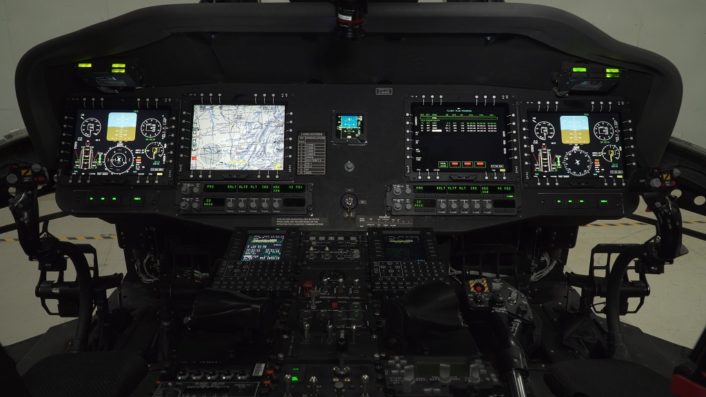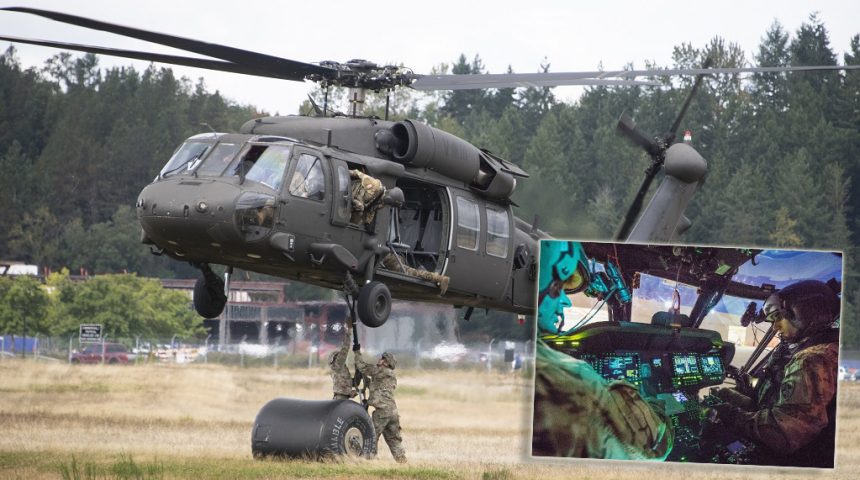This upgrade will give the legacy UH-60L the same glass cockpit configuration of the new UH-60M.
The U.S. Army has recently completed Initial Operational Test and Evaluation (IOT&E) of the UH-60V Black Hawk, an upgraded variant of the legacy UH-60L with a digital glass cockpit and integrated avionics suite supplied by Northrop Grumman.
The main goal of the upgrade is to provide the UH-60L with a nearly identical pilot-vehicle interface to the new UH-60M, improving the pilot’s situational awareness and mission safety, as well as decreasing the workload. Another goal is to reduce the obsolescence of the Black Hawk fleet and increase commonality and interoperability between the variants currently in service, speeding up new pilots’ training that won’t need to undergo extensive difference training to switch from one variant to the other.
Obviously, this will also speed up the maintenance crews’ training, as they won’t need to specialize on both avionic configurations, and will simplify the maintenance in terms of logistics, as there will be less replacement parts that need to be resupplied, thus reducing the Black Hawk life cycle cost.
The first test flight of the Victor variant was accomplished in January 2017, followed by Limited User Test (LUT) in late 2018 where test pilots from Redstone Test Center (Alabama) teamed with operational pilots, crewmembers and ground troops from the 82nd Combat Aviation Brigade (CAB) employed two UH-60V prototypes under realistic conditions, conducting air movement, air assault and external load missions under day, night (using Night Vision Goggles) and simulated instrument meteorological conditions.

In late 2019, the U.S. Army Operational Test Command (USAOTC) conducted a first IOT&E phase with three UH-60V prototypes together with aircrews from Company A, 2nd Battalion, 158th Aviation Regiment, 16th Combat Aviation Brigade and soldiers from the 1-2 Stryker Brigade Combat Team (SBCT) at Joint Base Lewis-McChord (Washington), flying over 120 hours under realistic battlefield conditions and performing mission profiles similar to the ones from LUT. The U.S. Army Center for Countermeasures also deployed three types of threat simulations to stimulate the aircraft’s survivability equipment and trigger pilots’ reactions using the updated cockpit capabilities.
According to official U.S. Army press releases, the feedback from the aircrews will help to refine the new systems and inform a full-rate production decision from the Utility Helicopter Program Office at Redstone Arsenal. The Army is looking to upgrade 760 legacy Lima Black Hawks to the Victor variant, while also phasing out the oldest airframes.
This is, however, only the first phase of the Victor upgrade. As we reported when the Bell 360 Invictus was announced, the U.S. Army is working on an Improved Turbine Engine Program (ITEP) and awarded a contract to General Electric Aviation in February 2019 to provide the new T901 engine that will replace the T700 engines, used by both the UH-60 Black Hawk and the AH-64 Apache, starting from 2026. While not confirmed yet, it is possible that both the Mike and Victor variants will receive the new engines, giving this way the legacy Black Hawk not only a new modern cockpit, but also better performance.
Let’s not forget that the U.S. Army is currently working also on the Future Long Range Assault Aircraft program to replace the Black Hawks, with the Sikorsky-Boeing SB-1 Defiant and the Bell V-280 Valor competing for the final choice that will be announced in 2022.









